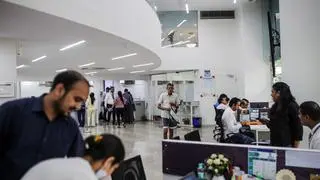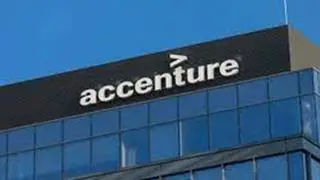Planning to buy a new set of wheels? Well, with banks offering attractive festival loans and dealers slipping in tidy discounts, you may find a sweet deal for yourself. But before you drive away in your dream vehicle, remember to slice and dice the price you pay. That’s because, your dealer may be charging you a steep insurance premium.
For many of us, buying insurance at the time of purchasing a new vehicle may just be an inane exercise. But guess what? If you do proper due diligence you can save up to ₹30,000-35,000 on insurance premiums on your high-end car purchases!
The on-road price you pay the dealer (above the ex-showroom price) includes registration fees, road tax, and a component of insurance premium. Since third party liability cover is mandatory in India, you cannot take your car out of the showroom without it. Hence, dealers build in the cost of insurance in your on-road price. Hassle free? Yes, but it may cost you dear.
Our discussions with various Hyundai and Maruti dealers in Chennai, reveal that the insurance cost is at least 40-45 per cent higher at the dealer end, vis-à-vis buying it online at various portals.
The new Creta 1.6 E Plus Petrol (1591 cc) 2019 model, for instance, has an ex-showroom price of about ₹9.99 lakh. The on-road price in Chennai is about ₹11.8 lakh. This includes about ₹65,000 of insurance premium. But a similar cover online, works out to just ₹37,377 (₹44,105 including GST). Hence, dealers charge a premium that is 40-45 per cent higher than that available online!
Similarly in the case of Maruti Ciaz Sigma Petrol model, the insurance premium built into your on-road price is about ₹32,000. The same policy would cost you ₹20,000-24,000 online.
While for many of us, spending an extra amount on insurance, may not seem a big deal, it is always important to know what policy your dealer is selling you.
We guide you on how to pick the right policy and what your rights are.
Some basics
Motor insurance has two components — a third-party (TP) cover and an own-damage (OD) cover. The former is mandatory and covers the legal liability arising out of damage to the property of a third party or bodily injury or death of a third person when the vehicle hits another vehicle or person. OD is optional and protects vehicle against damage or theft.
While TP rates are decided by IRDAI, insurers have the flexibility to decide on the OD cover premiums. Over the past year, insurance premiums have gone up on account of mainly two reasons.
One, you must take a five-year third party cover for new two-wheelers and three-years for cars (effective September last year). Earlier, TP cover was bought for one year at the time of purchase of the vehicle. Two, the regulator revised the TP rates upward across segments (depending on engine capacity), effective June this year.
Right comparison
First you need to decide on the Insured Declared Value (IDV). This is the maximum amount the insurer will pay you in the event of a total loss claim. In case of a new car, a usual thumb rule for IDV is — manufacturer’s listed ex-showroom price less 5 per cent depreciation.
Hence in the case of the Creta example, the IDV works out to ₹9.5 lakh. Look for policies online for similar IDVs.
Based on information provided by policybazaar.com, Digit Insurance, United India Insurance and HDFC Ergo, offer the best deal for the Creta 1.6 E Plus model currently (see table).

The other advantage of picking your own insurance is that you can include important add-ons, such as zero-depreciation. A zero-depreciation or bumper to bumper add on cover gives you comprehensive coverage without factoring in for depreciation.
Know your rights
Hence if you find alternative online options that are cheaper it may be worth considering them. Of course, the dealer may dissuade you to do so, on several pretexts.
In some of our interactions with dealers, they outright refused to allow the option of taking policy separately, stating that they would not be able to service the vehicles later on.
It is important not to succumb to such intimidations. Remember, the policy offered to you is by the insurance company. Hence all the conditions stipulated in the policy will have to be complied with, by the dealer/service centre. For instance, as long as a particular service station/garage is listed under the policy for cashless facility, you cannot be denied services.
“The terms and conditions in the insurance policies are standard. There is no difference between the one sold online or at the dealer end, provided of course all conditions are the same. If a policy bought online lists out empanelled centres where cashless claims can be done, the dealer/service centre has to comply and offer services accordingly,” explains Tarun Mathur, Chief Business Officer, General Insurance, PolicyBazaar.com.
“In one case, one of our customers approached us saying that the dealer had informed him that cashless claims will not be entertained if he bought the policy online. But later, at the time of service/repair, the dealer did provide cashless claims to the same customer,” adds Tarun.
Growing concerns over unlicensed persons soliciting or selling policies, led to IRDAI notifying the ‘guidelines on Motor Insurance Service Providers (MISP)’ in 2017. The MISP who could be an automobile dealer appointed by the insurer or the insurance intermediary, has specific eligibility conditions laid down by the Act. The sponsoring entity is now responsible for all acts of omission and commission of the MISP. So if you have any grouse or complaints with the manner in which you were sold policies, you now can approach the insurer, who in turn is accountable for the MISP/ dealer that sold you the policy in the first place. The MISP also cannot force you to buy a particular policy.
Hence take note of your rights, so the next time you take your new car out of a showroom, you aren’t handed a raw deal.









Comments
Comments have to be in English, and in full sentences. They cannot be abusive or personal. Please abide by our community guidelines for posting your comments.
We have migrated to a new commenting platform. If you are already a registered user of TheHindu Businessline and logged in, you may continue to engage with our articles. If you do not have an account please register and login to post comments. Users can access their older comments by logging into their accounts on Vuukle.